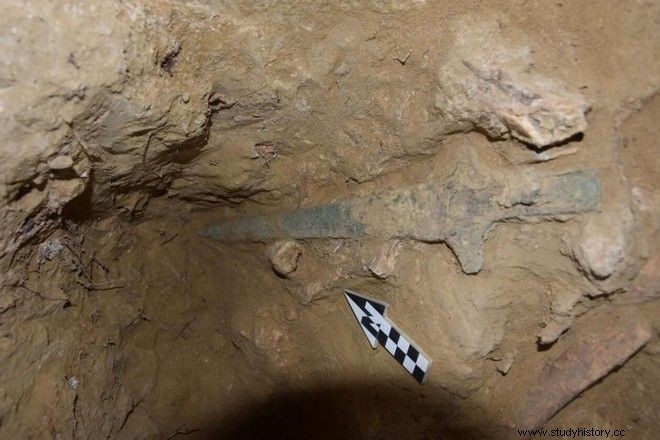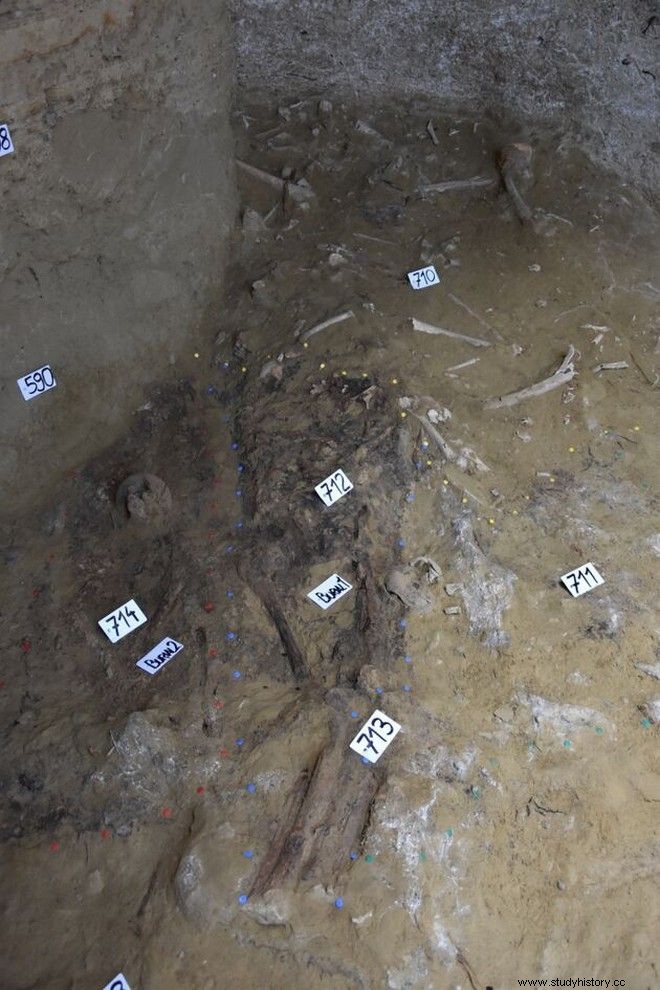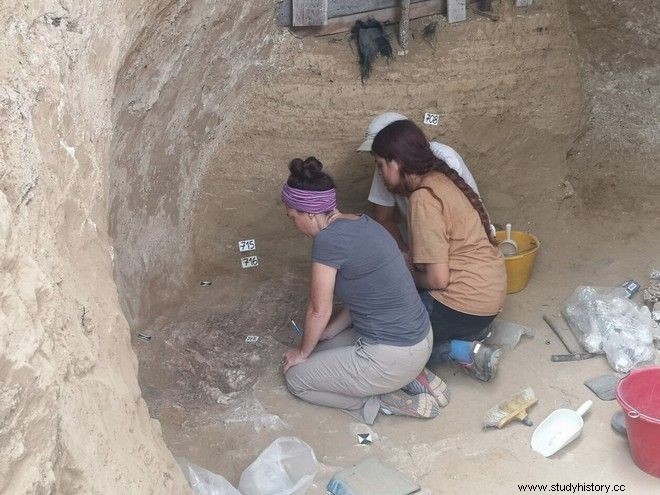The first period of this year's excavation research on the plateau of Trapeza, eight kilometers southwest of Aegio, has been completed, bringing to light, among other things, valuable collections of offerings and bronze swords. The position is identified with Rypes, a city that flourished during early historical times and participated in the colonization, establishing Kroton in greater Greece.
As stated in an announcement by the YPPOA, the excavation focused on the research of the Mycenaean necropolis, which is located on the southwestern slope of the plateau and is located on the ancient road that led to the acropolis of historical times. The tombs are chambered, carved into the soft sandy subsoil. Their use was long-standing and intensive, already during the proto-palatial period of the Mycenaean world, parallel to the heyday of the great centers of Mycenae, Tiryns and Pylos. Significant re-use of the tombs dates back to the 12th century BC, when the tombs were reopened and repeated, simultaneously serving as a site for burial customs and complex ritual practices until the end of the Bronze Age, in the 11th century BC. .

The excavation in the necropolis - continues the same announcement - yielded valuable sets of offerings consisting of vases, a number of seal stones and all kinds of beads and votives made of various materials (glass, faience, gold, cornelian, fine crystal), making up necklaces and elaborate jewelry, as well as gold periaptas in the shape of boucrans that refer to the trade relations with the eastern Aegean and Cyprus. The rectangular-shaped chamber of tomb 8, which was investigated this year, presented a complex stratigraphy. In the first layer of burials of the 12th c. BC, three burials were investigated by country, decorated with false-mouthed amphorae. The bones of the older graves had been removed and placed with respect and great care in two overlapping piles at the back of the chamber in contact with the walls of the tomb. At the top of these anacomidas, three inscribed clay alabasters and an amphora date these first burials to the proto-palatial period (14th century BC).

Among the bones and offerings that accompanied these earliest burials, glass and cornelian beads, a clay figurine of a horse, and an exceptionally well-preserved bronze sword had been placed. At the base of the pile of bones, two more intact bronze swords were also found, which also save part of their wooden handles. The three swords belong to different types, Sandars D and E, and date to the heyday of the palace period of the Mycenaean world. As the YPPOA notes, the presence of these weapons, as well as the long spears of the same chronological period found during the excavation of neighboring graves in the necropolis of Trapeza, is particularly important. They distinguish it from the other necropolises of Achaia by underlining the direct dependence of the local society on the powerful palatial centers. The weapons are products of the palace workshops, perhaps of Mycenae, thus being consistent with the Epic and the mythological tradition handed down to us. According to her, Achaia belonged to the kingdom of Agamemnon and the conqueror of Mycenae gathered the most worthy men in neighboring Aegio in order to discuss how the campaign against Priam's state should be carried out.

The location of the Mycenaean settlement of Trapeza is not yet clear enough. Probably, during the early period of use of the necropolis, the settlement was located on a hill, at a distance of about 100 meters south of the Bank. This year, in parallel with the research in the Mycenaean necropolis, the excavation of part of the settlement revealed part of a building, perhaps a palace. It is a wide rectangular room with a hearth in the center and characteristic pottery that dates it to the 17th century. BC
Dr. Andreas G. Vordos, archaeologist of the Ephorate of Antiquities of Achaia, directs the systematic excavation at Trapeza Aegiou, ancient Rypes. In the interdisciplinary research program of the Mycenaean necropolis and the prehistoric settlement, the Professor of Aegean Archeology of the University of Udine Elisabetta Borgna participates with a group of students from the Universities of Udine, Trieste and Venice, as well as postgraduate students from Greek Universities.
The main sponsor of the excavation at the Bank of Aegialia, ancient Rypes, is the A.G. Foundation. Leventis. The excavation work is also supported by Olympia Odos S.A.
Follow News247.gr on Google News and be the first to know all the news
